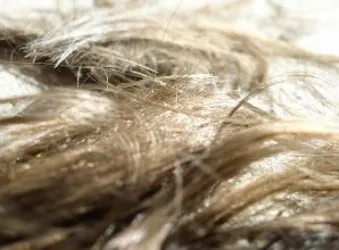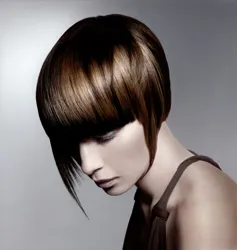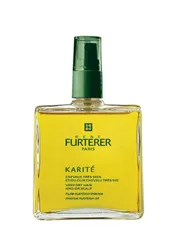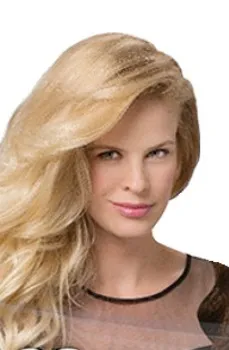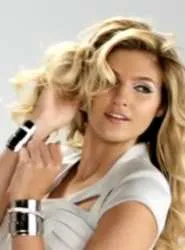
How To Identify, Manage And Prevent Split Hair Ends
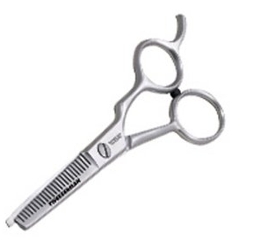 One of the most common hair challenges that most hair consumers must deal with is split ends.
One of the most common hair challenges that most hair consumers must deal with is split ends.
No one is exempt from getting split ends. Even those with receding hairlines may experience torn or ripped hair ends.
Regardless of age, race, hair type, texture or condition, split ends can occur. Sometimes the appearance of split ends may be genetically pre-determined.
When hair is in excellent condition it will be less susceptible to developing splits and tears along the ends than hair which is damaged. Even hair in great shape can develop trichoptlosis, the official name of split ends.
Split ends occur when the protective cuticle has been worn away or stripped off of the ends of the cuticle. Once a split end occurs there is no cure other than removing the splits by cutting them off.
Common Cause Of Split Ends
The most common causes of split ends include:
- Genetically dry or brittle hair
- Excessive brushing, combing or playing with strands
- Overuse of hot tools (blow dryers, hot irons, hot rollers)
- Chemical damage from hair color, re-texturizers, relaxers, chemical straighteners or similar
- Environmental damage - overexposure to sun, heat, wind, toxins
- Overcleansing (using too much shampoo) or cleansing too frequently - daily shampoo or more often
- Utilizing harsh shampoo products (excessive chemicals), hot water or piling wet hair on top of your head
- Rubbing hair instead of gently blotting dry.
- Rough handing of hair when wet - brushing, combing, pulling
- Exposing hair to rough edged combs, brushes with knobs, rough pillow cases, towels or similar items
- Overly aggressive detangling or using brushes on wet hair
How To Trim Split Ends At Home
Once the hair cuticle is removed, it's impossible to replace. I don't care if you've read about 100 split end repair products, Typically the hair splits into two or three strands, and can be as long or two to three centimeters in length. The best treatment is to cut off the split end of the damaged fiber.
Yes it's true you can temporarily "glue" ends together, but ultimately they must come off or will continue to move up the hair shaft.
The good news about split ends is that you can actually do some of your own maintenance at home if you use the proper professional quality scissors and make sure you are appropriate about your trimming process. Contrary to some old wives tale it is never appropriate to burn your split ends off.
Supermodel Giselle Bundchen is known to take a scissors to her own split ends. When in doubt leave the scissors to your hairdresser. Hair consumers within the long hair community refer to trimming their own ends as "search and destroy."
How To Remove Split Ends:
- Detangle hair completely with a 100% boar bristle brush, your fingers or a wide toothed comb. It's important to make sure all knots and tangles are completely removed before trimming.
- Separate hair into 1-2" sections.
- Clip the rest of your hair out of the way.
- Be sure to sit in a bright light before you begin snipping to make sure you have clear visibility.
- Use a professional quality sharp scissors designed for cutting hair. Do not use a dull scissors or a paper scissors.
- Take the individual section and carefully twist into a clockwise direction. This will force all split ends to pop out.
- Use the scissors and snip the split ends. Only cut the split end and at least 1" to 1 1/2" about the split area to make sure it's completely removed and stop future splitting.
- Poor nutrition, excessive use of nicotin, alcohol, prescription or recreational drugs or similar.
Preventing Split Ends Before They Occur
If your hair is prone to splitting, ripping or tearing stop and try to figure out what daily behaviors you may be performing which might cause the problem. Terminate any hair care habits which may cause damage.
When you're required to use hot dryers or styling tools always protect hair with a protective treatment. Maintain a regular schedule of deep and leave-in conditioning.
Other causes of splitting can be washing or wetting hair that is tangled or knotted. Before you ever get hair wet be sure to carefully detangle. Remember that hair is like a fine lace and should be treated as delicately as possible.
Additional Notes On Split Ends
It's been proven split ends have a tendency to keep ripping if they are not removed. Whether you do them at home yourself or have a professional snip them, keeping split ends at bay is very important.
One thing to keep in mind is that sometimes after you trim your split ends your hair may seem worse before it seems better. After you're finished trimming the ends apply a leave-in conditioning cream or 100% organic jojoba oil to prevent further splits.
More Information
Please follow me on Twitter at: http://Twitter.com/HairBoutique. I look forward to meeting new people from all walks of Twitter and learning from their Tweets. Visit us at Hairboutique.com located at: http://www.HairBoutique.com, on Facebook, MySpace and YouTube.
Thank you for visiting us at The HairBoutique Blog and for leaving your comments. They are very much appreciated. We apologize in advance but must remove any direct advertisements or solicitations.
Social Media Network Information
Please follow us on Twitter at: https://Twitter.com/HairBoutique. I look forward to meeting new people from all walks of Twitter and learning from their Tweets.



